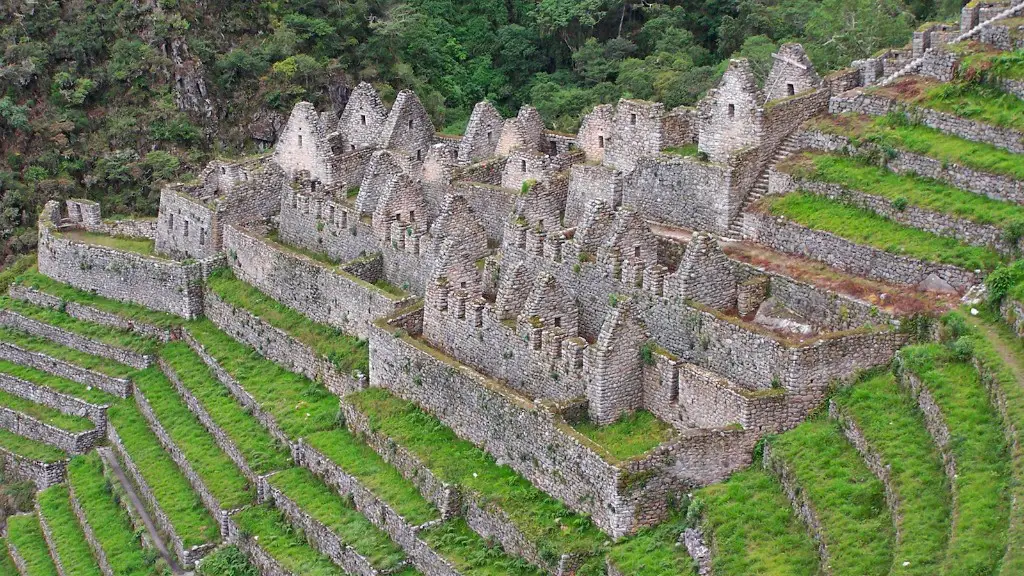Overview
Thousands of years ago, the ancient city of Pompeii, located in modern-day Italy, was the victim of a devastating volcanic eruption. Yet the city was not forgotten, as its tragic history has been preserved thanks to the bodies of its inhabitants which were shockingly still intact, despite the immense force of the volcano. In this article, we explore how Pompeii bodies were preserved and how experts are using modern-day scanning methods to further decode the mysteries of Pompeii’s past.
Cause and Effect
Mount Vesuvius, the volcano that caused the destruction of Pompeii, was one of the most powerful and destructive natural disasters of its time. The impact of the two-day eruption was so great that it caused the entire city to be enveloped under 20 feet of ash and gasses. The extreme heat, estimated at 500 degrees Celsius, caused the stone, wood and other materials within Pompeii to instantly combust and disintegrate.
The reason why Pompeii’s inhabitants were so well preserved, is due to the manner in which the ash and dust fell over the city. This action trapped in and preserved the bodies within the same positions they had been in when Vesuvius erupted. This resulted in the creation of a time capsule of sorts, preserving the appearance and everyday life of the residents of Pompeii more than 1,900 years ago.
Preservation Techniques
Due to the unique conditions of the volcanic ash, experts initially experimented with different ways to preserve the bodies. They employed a range of techniques, from wax molds to body casts to even resorting to the use of furniture varnish. After multiple failed attempts, experts eventually determined that the best method for preserving the bodies was to encase them in plaster.
The plaster technique involves taking a mold of the corpses and then surrounding the bodies with plaster. This method is believed to have been used since the 1800’s and is still used today. It has been used to preserve bodies from over 70 different excavations from the ancient Roman city.
Technologies and New Discoveries
Today, archaeologists are beginning to use modern day scanning technologies to view the hidden secrets that have been preserved deep within the bodies. These advanced scans provide experts with unprecedented access to information, such as the position of the body, the age of the victim, and other details. By using this data, experts can now piece together a more complete picture of the events that unfolded during the fateful volcanic eruption.
In the past few years, the use of scanning technologies has made some ground-breaking discoveries. Last year, a team of experts used a CT scan to uncover a well-preserved skull of a Pompeii victim. The skull, which was found in a sculpted stone marker with the victim’s name inscribed on it, provides experts with a glimpse of the victim’s life— from the exact location of his social and economic status to what his daily routines may have been.
Other Findings
Other valuable insights come in the form of the objects which were found alongside the bodies. From jewelry to coins, the objects provide clues about the economic and social standings of the persons who were living in Pompeii at the time. In addition to these findings, experts have also been able to recover a number of organic substances, such as leather and skin, enabling researchers to understand the life of these people in more detail.
Most recently, an excavation of an ancient funeral ritual revealed the remains of a newborn baby. Researchers found the baby’s skeleton alongside a pouch containing coins and jewelry. Although it is unclear what happened to the baby’s mother, the objects in the pouch suggest that the child must have been of high social standing.
Modern Day Implications
What makes the discovery of Pompeii even more meaningful is the fact that it has implications for modern-day society. From providing insight into the behaviors of ancient Roman citizens to offering universities access to preserved artifacts, Pompeii has given researchers and students alike access to an abundance of untapped knowledge.
Furthermore, researchers are utilizing the newfound knowledge to form speculations on the future of our own society. With its unique position in history, the discoveries of Pompeii offer us a window into the past, allowing us to learn from the mistakes and successes of our ancestors in order to protect our planet better in the years to come.
Worldwide Interest
Despite Pompeii being ravaged by the volcanic eruption some thousands of years ago, the ancient city continues to captivate the world. Each year, millions of tourists visit the city to observe its well-preserved ruins, to learn about its ancient culture, and to gain an understanding of the everyday life of its past inhabitants.
Additionally, the world has become even more intrigued with the city since the recent scanning technologies have been employed to further uncover the secrets and mysteries of the city. What can be certain after all of the recent discoveries is that people will continue to be intrigued by Pompeii’s history and its many secrets for many years to come.
Scientific Studies
The city has also drawn increased interest from scientists in the past few years. The University of Connecticut, for example, has launched a multidisciplinary project to study the remains and artifacts of Pompeii, called the Pompeii Archaeological Research Project: Porta Stabia (PARP:PS). This study has allowed researchers access to many of the archaeological sites that have been closed to excavations in the past. Researchers from the project have been using archaeological and geophysical surveys to gain an understanding of the layout of Pompeii and the impact the eruption had on it.
In conjunction with these scientific studies, there have been many collaborations between archaeologists and historians to further unlock the secrets of the city and to shed light on what life was like in ancient Rome. By leveraging the power of technology and partnering with experts from a multitude of backgrounds, researchers have been able to uncover a wide array of never-before-seen artifacts, inscriptions, and other artifacts to give us a clearer picture of life in Pompeii.
Conclusion
In conclusion, the tragedy that befell the ancient city of Pompeii has been preserved through the centuries largely thanks to the unique manner in which the ash and dust fell after the volcanic eruption. In addition, experts have made great strides in uncovering the mysteries of the city through modern-day scanning technologies and scientific studies. From providing insight into the past to inspiring speculation of the future, the discoveries of Pompeii are sure to captivate people for many years to come.



